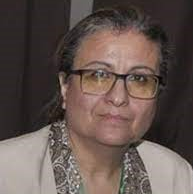New Insights into Wastewater Reclamation and Reuse
A special issue of Water (ISSN 2073-4441). This special issue belongs to the section "Wastewater Treatment and Reuse".
Deadline for manuscript submissions: closed (30 November 2023) | Viewed by 25013
Special Issue Editors
Interests: nature-based solutions; wastewater treatment; sanitation; water quality; water reuse; sustainable development; climate change adaptation
Special Issues, Collections and Topics in MDPI journals
Interests: environemnetal geochemistry; soil pollution; remediation; reuse; pharmaceuticals in soils, plants, and waters; microplastics in water, wastewater and environment
Special Issues, Collections and Topics in MDPI journals
Interests: wastewater treatment and reuse; lagooning; infiltration percolation; activated sludge; constructed wetland; nutrients; heavy metals; pollution impact on soil and cultures
Special Issue Information
Dear Colleagues,
Nowadays, the water crisis is becoming a major and growing concern around the world. The situation is expected to worsen as climate change and human activities increase the frequency, magnitude, and impact of droughts. To overcome this major challenge, nonconventional water resources, such as reclaimed wastewater, have gained an increasing role in the planning and development of alternative water supplies. A high potential of wastewater recycling and reuse is available nowadays, and can be applied to irrigation (agriculture, landscape, and golf courses), industrial use, ground water recharge, aquaculture, drinking water use, etc. Hence, the reclamation and reuse of wastewater for different purposes represents an attractive option to cope with water scarcity and meeting the challenge of the fresh water needs, especially in arid and semi-arid regions. Thus, nonconventional water use may provide a sustainable solution to address a critical water shortage.
The goal of this Special Issue is to provide a platform for scientists, academics, and professionals all over the world to promote, share knowledge on the latest advances in wastewater reclamation and reuse, and discuss new insights and developments in the area.
We are pleased to invite researchers and authors to submit original research and review articles that explore new insights into wastewater reclamation and reuse. Research areas may include, but are not limited to, the following:
- Municipal wastewater reclamation and reuse;
- Industrial wastewater reclamation and reuse;
- Cases studies on wastewater reclamation and reuse;
- Advanced technologies;
- Nature-based solutions;
- Applications of AI to wastewater reclamation and reuse;
- Challenges for water reclamation and reuse;
- Microplastics in wastewater and environment;
- Impact on soil and plants;
- Regulations and standards;
- Quality issues;
- Risk assessments;
- Economic aspects of wastewater reclamation and reuse.
We look forward to receiving your contributions.
Prof. Dr. Laila Mandi
Prof. Dr. Ioannis K. Kalavrouziotis
Prof. Dr. Naaila Ouazzani
Guest Editors
Manuscript Submission Information
Manuscripts should be submitted online at www.mdpi.com by registering and logging in to this website. Once you are registered, click here to go to the submission form. Manuscripts can be submitted until the deadline. All submissions that pass pre-check are peer-reviewed. Accepted papers will be published continuously in the journal (as soon as accepted) and will be listed together on the special issue website. Research articles, review articles as well as short communications are invited. For planned papers, a title and short abstract (about 100 words) can be sent to the Editorial Office for announcement on this website.
Submitted manuscripts should not have been published previously, nor be under consideration for publication elsewhere (except conference proceedings papers). All manuscripts are thoroughly refereed through a single-blind peer-review process. A guide for authors and other relevant information for submission of manuscripts is available on the Instructions for Authors page. Water is an international peer-reviewed open access semimonthly journal published by MDPI.
Please visit the Instructions for Authors page before submitting a manuscript. The Article Processing Charge (APC) for publication in this open access journal is 2600 CHF (Swiss Francs). Submitted papers should be well formatted and use good English. Authors may use MDPI's English editing service prior to publication or during author revisions.
Keywords
- municipal wastewater reclamation and reuse
- industrial wastewater reclamation and reuse
- cases studies on wastewater reclamation and reuse
- advanced technologies
- nature-based solutions
- applications of AI to wastewater reclamation and reuse
- challenges for water reclamation and reuse
- microplastics in wastewater and environment
- impact on soil and plants
- regulations and standards
- quality issues
- risk assessments
- economic aspects of wastewater reclamation and reuse
Benefits of Publishing in a Special Issue
- Ease of navigation: Grouping papers by topic helps scholars navigate broad scope journals more efficiently.
- Greater discoverability: Special Issues support the reach and impact of scientific research. Articles in Special Issues are more discoverable and cited more frequently.
- Expansion of research network: Special Issues facilitate connections among authors, fostering scientific collaborations.
- External promotion: Articles in Special Issues are often promoted through the journal's social media, increasing their visibility.
- Reprint: MDPI Books provides the opportunity to republish successful Special Issues in book format, both online and in print.
Further information on MDPI's Special Issue policies can be found here.







